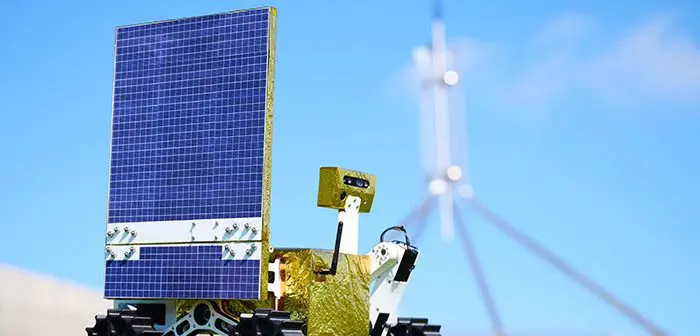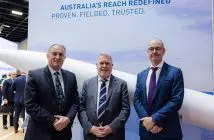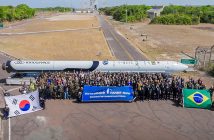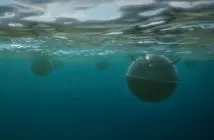
Australia has taken a significant step towards developing a viable space industry by launching a locally designed prototype lunar rover, otherwise known as ‘Roo-ver’.
The AROSE Lunar Rover, weighing just 20 kilograms and measuring the size of a large suitcase, will be operated remotely to collect soil, ice and other samples from the moon’s surface.
“The unveiling of the AROSE lunar rover at Parliament House, now proudly displayed at Canberra Airport, marks a pivotal moment in Australia’s journey towards sovereign space capability,” said AROSE Chairperson Deena Shiff. “AROSE has always been committed to advancing Australian expertise, and this rover is a clear demonstration of our nation’s potential to lead in space exploration. We’re not just building a rover, we’re building a legacy of Australian ingenuity.”
A team of engineers and scientists from the Perth-based Australian Remote Operations for Space and Earth (AROSE) consortium, designed the rover.
“I’m particularly proud of our female leadership team and our key Trailblazer partners Fugro SpAARC and Nova Systems, who’ve helped to bring this project to fruition,” said AROSE CEO Leanna Cunnold.
She said AROSE had leveraged home-grown knowledge to develop Roo-ver, while also developing Australian sovereign capability in the global space race. “Importantly, we’re also inspiring the next generation of Australians to take up STEM subjects at school and university and developing our national space sector workforce,” Cunnold added.
In addition, the world-leading robotics and remote operation technology demonstrated by Roo-ver will be of major benefit to Australia’s resources and mining sectors.
AROSE is one of two successful teams chosen for Stage 1 of the Australian Space Agency’s Trailblazer program. Roo-ver has been developed to collect lunar soil and gain new information about the Moon’s surface via a NASA-science payload. This is a critical step to supporting a sustainable human presence on the Moon, Mars and beyond.
“The Trailblazer program showcases our ability to deliver an end-to-end space mission: from the design to the build, testing, integration and operations,” Cunnold said. “Australia’s first national space mission will be a historic moment. The project brought together an amazingly diverse range of skill sets to work towards solving the challenge of remotely operating the lunar rover from the earth.”
“It’s not often you have a room of such diverse industry specialists – roboticists working with systems engineers, software engineers, mechanical and electrical engineers, on one project and for one important purpose.”





